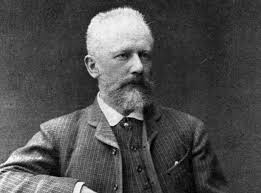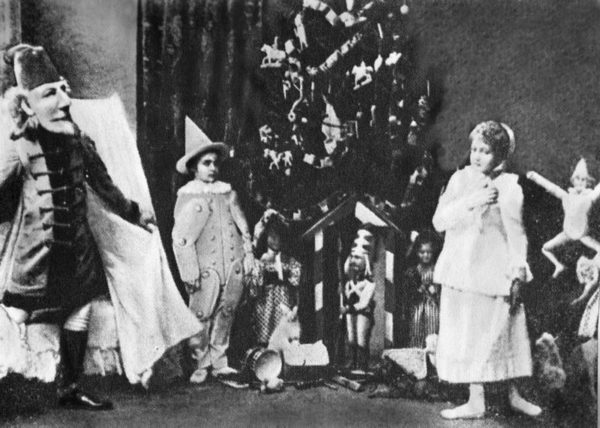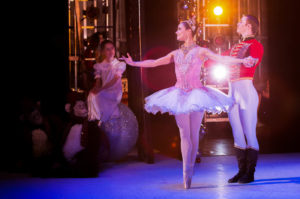 Listening to Tchaikovsky’s Nutcracker Suite during the Holidays is cherished by many as a beloved tradition, one that gets them into the festive spirit of the season in no time flat. Surprisingly, the original ballet that Tchaikovsky composed the suite for (a ballet based on an adaptation of E. T. A. Hoffmann’s story “The Nutcracker and the Mouse King” by Alexandre Dumas) received a lukewarm reception from audiences and critics alike. Although this original production was far from successful, its enduring charm and appeal would grow over time thanks to the 20-minute suite that Tchaikovsky compiled from its many colorful scenes.
Listening to Tchaikovsky’s Nutcracker Suite during the Holidays is cherished by many as a beloved tradition, one that gets them into the festive spirit of the season in no time flat. Surprisingly, the original ballet that Tchaikovsky composed the suite for (a ballet based on an adaptation of E. T. A. Hoffmann’s story “The Nutcracker and the Mouse King” by Alexandre Dumas) received a lukewarm reception from audiences and critics alike. Although this original production was far from successful, its enduring charm and appeal would grow over time thanks to the 20-minute suite that Tchaikovsky compiled from its many colorful scenes.
Since the late 1960’s, the popularity of the complete Nutcracker ballet has blossomed so enormously that it has become a cultural staple of the ballet world. Every young ballet dancer dreams of joining a professional production of this timeless classic. Performed by countless ballet companies, primarily during the Christmas season and especially in North America, it is estimated that performances of the Nutcracker alone generate American ballet companies 40% of their annual revenue. The Mouse King himself would be hard pressed to turn down that much cheese! So let us twirl and leap our way back through time, to the snowflake-laden land of Russia at the turn of the 19th century, and witness how this masterpiece came to be…
 Hot on the heels of Tchaikovsky’s successful 1890 ballet suite “The Sleeping Beauty, Ivan Vsevolozhsky (then the director of the Imperial Theatres) commissioned the Russian composer to create a double-bill program that incorporated both an opera and a ballet. For the first part of the bill Tchaikovsky offered up his opera “Iolanta”. To satisfy the ballet portion, Tchaikovsky decided that another collaboration with Marius Petipa (“The Sleeping Beauty”’s choreographer) was in order. The libretto for the ballet was chosen by Petipa, entitled “The Story of a Nutcracker”. The plot needed to be excessively trimmed to fit a two-act ballet, and elements of Hoffmann’s original source material could not be fully utilized. There is a lengthy flashback sequence in Hoffmann’s tale (titled “The Tale of the Hard Nut”) that describes how the Prince became the Nutcracker. So detailed is this sequence that it could have been the subject of its own ballet and, unfortunately, could not be included in Petipa and Tchaikovsky’s reimagining.
Hot on the heels of Tchaikovsky’s successful 1890 ballet suite “The Sleeping Beauty, Ivan Vsevolozhsky (then the director of the Imperial Theatres) commissioned the Russian composer to create a double-bill program that incorporated both an opera and a ballet. For the first part of the bill Tchaikovsky offered up his opera “Iolanta”. To satisfy the ballet portion, Tchaikovsky decided that another collaboration with Marius Petipa (“The Sleeping Beauty”’s choreographer) was in order. The libretto for the ballet was chosen by Petipa, entitled “The Story of a Nutcracker”. The plot needed to be excessively trimmed to fit a two-act ballet, and elements of Hoffmann’s original source material could not be fully utilized. There is a lengthy flashback sequence in Hoffmann’s tale (titled “The Tale of the Hard Nut”) that describes how the Prince became the Nutcracker. So detailed is this sequence that it could have been the subject of its own ballet and, unfortunately, could not be included in Petipa and Tchaikovsky’s reimagining.
Petipa’s vision for the ballet was absolute, and as such gave very detailed compositional guidelines to Tchaikovsky in designing each scene of the story for the stage. His suggestions were warmly received by Tchaikovsky, who crafted each number’s tempo and number of bars precisely as he was bidden. Still, this fruitful partnership was not one which leaned in dictatorial favor of the choreographer. When Tchaikovsky needed a break from composing to conduct concerts for the opening of Carnegie Hall, Petipa gave him his blessing and encouraged Tchaikovsky to enjoy his 25 days in the United States. Tchaikovsky returned with a renewed interest in the project and composed many parts of The Nutcracker Suite in Rouen, France.
Although Petipa fell ill in August of 1892 and was unable to continue work on the project, his assistant of seven years (Lev Ivanov) ensured that his artistic vision would reach that stage accompanied by Tchaikovsky’s charming orchestrations. So it was that, after several stressful months of pulling the project together for debut, The Nutcracker Ballet was performed at the Imperial Mariinsky Theatre in Saint Petersburg on December 18th of 1892. Italian composer Riccardo Drigo served as the maestro. The story’s child characters were brought to life by real children, who were students at the Imperial Ballet School in Saint Petersburg at the time.
Petipa’s libretto was criticized as “lopsided”, with critics focusing on his shying away from being faithful to the source material of Hoffmann’s tale as well as his decision to feature children so prominently in the ballet. Tchaikovsky’s Nutcracker suite was the saving grace, its idiomatic writing praised as being “astonishingly rich in detailed inspiration” and “from beginning to end, beautiful, melodious, original, and characteristic”. Though Tachaikovsky felt at the time that he had fallen short of the success he achieved with The Sleeping Beauty, the Nutcracker Suite would live on to become his most endearing contribution to the world of music.
Fast-forward nearly thirty years, and the choreographer Alexander Gorsky decides to resurrect the Nutcracker (with some important changes). He stages a 1919 production which gives the Sugar Plum Fairy’s dance with her Cavalier to Clara and her Nutcracker Prince. Gorsky also makes it plain that these two lead characters are to be played by adults instead of children. In 1934, choreographer Vasili Vainonen staged his own version of the Nutcracker ballet, focusing his efforts on improving the work by making changes based on the critical reception to the 1892 debut. Taking Gorsky’s lead, Vainonen casts adult dancers in the roles of Clara and the Prince. Vainonen’s version would greatly influence all productions of the Nutcracker ballet which came after it.
The first complete performance of the Nutcracker ballet outside of Russia took place in 1934 in London, England. Staged by Nicholas Sergeyev with a focus on Petipa’s original choreography, this performance of the ballet was an international success. In 1940 another abridged version of the ballet (performed by the Ballet Russe de Monte Carlo) was staged by Alexandra Fedorova using Petipa’s choreography as inspiration. And so the Nutcracker ballet arrived in the United States, where (on the evening of 24 December 1944) thousands of Americans were blown away by the San Francisco Ballet’s take on the Russian tale. Despite the enormous success of this production, it was The New York City Ballet’s 1954 performance of George Balanchine’s reworked Nutcracker (and, more specifically, Maria Tallchief in the role of the Sugar Plum Fairy) which helped elevate the work from semi-obscurity into an annual Christmas classic for the continental West.
 The Nutcracker Suite remains one of Tchaikovsky’s most popular compositions to this day. Containing some of his most memorable melodies, the music itself belongs to the Late Romantic period and is practically unavoidable on cable television during the holidays. The “Trepak”, or “Russian dance”, is arguably the most exhilarating and energetic pieces in the ballet, to which the idyllic “Waltz of the Flowers” provides a lush contrast. The “March” is known by Will Ferrell fans everywhere, as it is to this tune that he (as Buddy the Elf) decorates Gimbles’ Toy Store. The “Dance of the Sugar Plum Fairy” exemplifies all the magic and mystery felt by children (and adults alike) who eagerly await Santa on the evening of December 24th. Tchaikovsky’s admiration of the music of Mozart and Haydn is peppered throughout passages of the Overture, the “Entrée des parents”, and “Grossvater Tanz” in Act 1. Tchaikovsky’s original score uses the celesta to create the sparkling effect heard in the “Dance of the Sugar Plum Fairy”. When he discovered the celesta in Paris, Tchaikovsky fell in love with its “heavenly sweet sound”. He also makes use of toy instruments during the Christmas party scene.
The Nutcracker Suite remains one of Tchaikovsky’s most popular compositions to this day. Containing some of his most memorable melodies, the music itself belongs to the Late Romantic period and is practically unavoidable on cable television during the holidays. The “Trepak”, or “Russian dance”, is arguably the most exhilarating and energetic pieces in the ballet, to which the idyllic “Waltz of the Flowers” provides a lush contrast. The “March” is known by Will Ferrell fans everywhere, as it is to this tune that he (as Buddy the Elf) decorates Gimbles’ Toy Store. The “Dance of the Sugar Plum Fairy” exemplifies all the magic and mystery felt by children (and adults alike) who eagerly await Santa on the evening of December 24th. Tchaikovsky’s admiration of the music of Mozart and Haydn is peppered throughout passages of the Overture, the “Entrée des parents”, and “Grossvater Tanz” in Act 1. Tchaikovsky’s original score uses the celesta to create the sparkling effect heard in the “Dance of the Sugar Plum Fairy”. When he discovered the celesta in Paris, Tchaikovsky fell in love with its “heavenly sweet sound”. He also makes use of toy instruments during the Christmas party scene.
Whether you are a fan of ballet or not, some element of Tchaikovsky’s Nutcracker Suite has featured into your holiday celebrations in one way or another. We hope you enjoy the SSO’s take on this timeless classic, and that the spirit of the season can bring you just as much magic as Tchaikovsky brought to that bearded and slack-jawed toy soldier so many years ago.